How to Cook Boneless Beef Ribs recipe
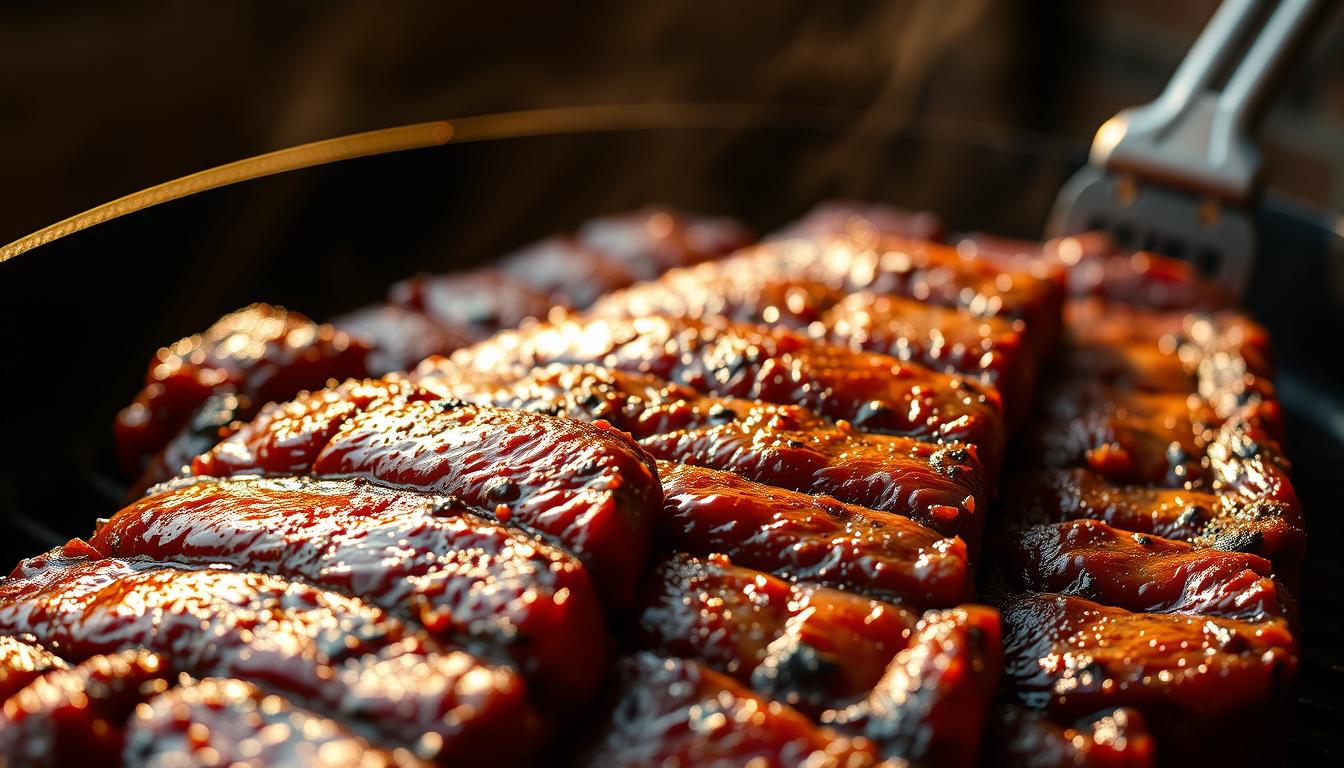
Imagine sinking your teeth into tender, flavorful boneless beef ribs, perfectly cooked to melt in your mouth. This dish is more than just a meal—it’s an experience. Whether you’re a novice in the kitchen or a seasoned cook, this guide will walk you through the simple steps to create a delicious meal that’s sure to impress.
The beauty of boneless beef ribs recipe lies in their versatility. You can cook them in a slow cooker or on the stovetop, making them adaptable to any schedule. The key to achieving that perfect texture is a low and slow cooking method, which breaks down the connective tissue, transforming tough meat into a tender delight.
In the following sections, we’ll dive into detailed instructions, troubleshooting tips, and ways to customize the recipe to your taste. By the end, you’ll be equipped to create boneless beef ribs that are nothing short of amazing.
Table of Contents
Ingredient Essentials and Prepping Your Beef Ribs
When it comes to crafting a memorable dish, the right ingredients and proper preparation are key. For boneless beef ribs, selecting the perfect cut and prepping with care ensures a flavorful and tender result.
Selecting the Perfect Cut
The ideal cut for boneless beef ribs comes from the chuck area, known for its rich marbling. This marbling enhances tenderness and flavor during cooking. Look for meat with even fat distribution to ensure consistent texture.
Prepping and Seasoning Tips
Start by seasoning the ribs generously with salt and pepper. Dredge the meat in flour to create a flavorful crust. Prep your ingredients by slicing onions and finely chopping garlic. Use a large skillet or Dutch oven for proper browning, and monitor the cooking time to avoid overcooking.
| Ingredient | Quantity | Purpose |
|---|---|---|
| Salt | To taste | Enhances flavor |
| Pepper | To taste | Adds seasoning |
| Flour | 1 cup | Creates crust |
| Olive Oil | 2 tbsp | Browning |
| Butter | 1 tbsp | Richness |
| Onion | 1 medium | Flavor base |
| Garlic | 3 cloves | Aroma |
| Stout Beer | 1 cup | Sauce flavor |
| Beef Stock | 2 cups | Moisture |
By carefully selecting and prepping your ingredients, you set the stage for a delicious and satisfying meal. These steps ensure your boneless beef ribs are full of flavor and tender to the bite.
Mastering Your boneless beef ribs recipe
Transforming tough meat into a tender, flavorful dish requires precision and patience. With the right techniques, you can achieve restaurant-quality results at home.
Step-by-Step Cooking Process
Browning each side of the ribs in oil and butter for about 5 minutes seals in flavor and texture. This step is crucial for developing a rich crust.
Braising Techniques and Liquid Choices
After browning, deglaze the pot with stout beer, scraping up the browned bits to enhance the sauce. Add 2 cups of beef stock and bring to a simmer. Cover and let cook until tender, about 2 hours on the stovetop or 4 hours in a slow cooker.
Slow Cooker vs. Stovetop Methods
| Cooking Method | Cooking Time | Benefits |
|---|---|---|
| Slow Cooker | 4 hours | Hands-off, consistent heat |
| Stovetop | 2 hours | Quick, easy monitoring |
Both methods yield tender results. Adjust heat to maintain a steady simmer and add seasonings as needed. Monitor the cooking process by the minute for optimal results.
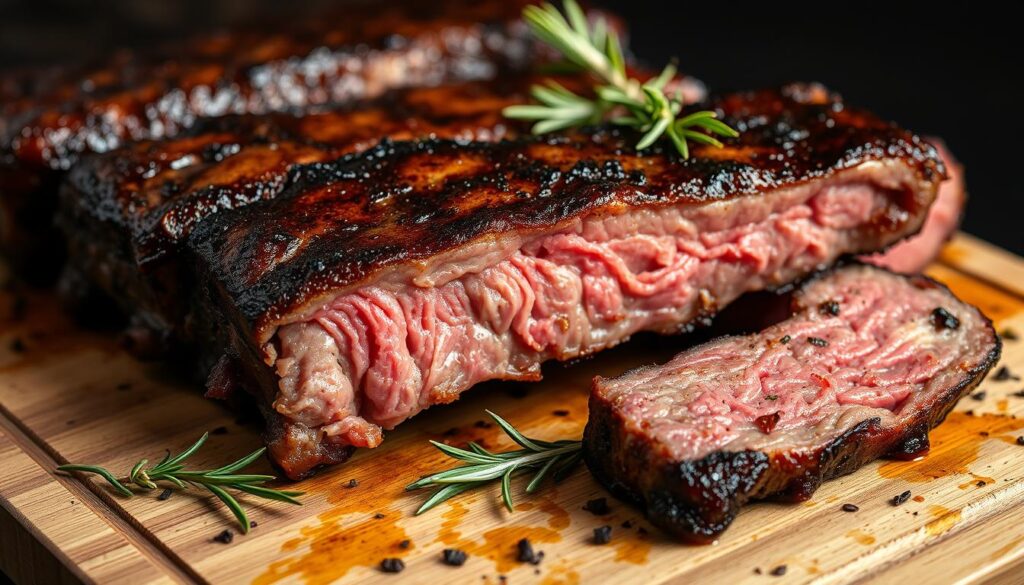
By following these steps, you’ll enjoy perfectly cooked, flavorful boneless beef ribs every time. The key is to maintain steady heat and let the slow cooking process work its magic.
Cooking Techniques for Tender, Flavorful Ribs
Choosing the right cooking method is crucial for achieving tender and flavorful beef ribs. Whether you prefer a slow cooker, stovetop, or Instant Pot, each technique offers unique benefits that can elevate your dish.
Comparing Cooking Methods
A slow cooker is ideal for keeping the meat moist, ensuring fall-apart tenderness over 4 hours. On the stovetop, you can achieve similar results in just 2 hours with careful monitoring. For a quicker option, the Instant Pot reduces cooking time significantly while retaining flavor.
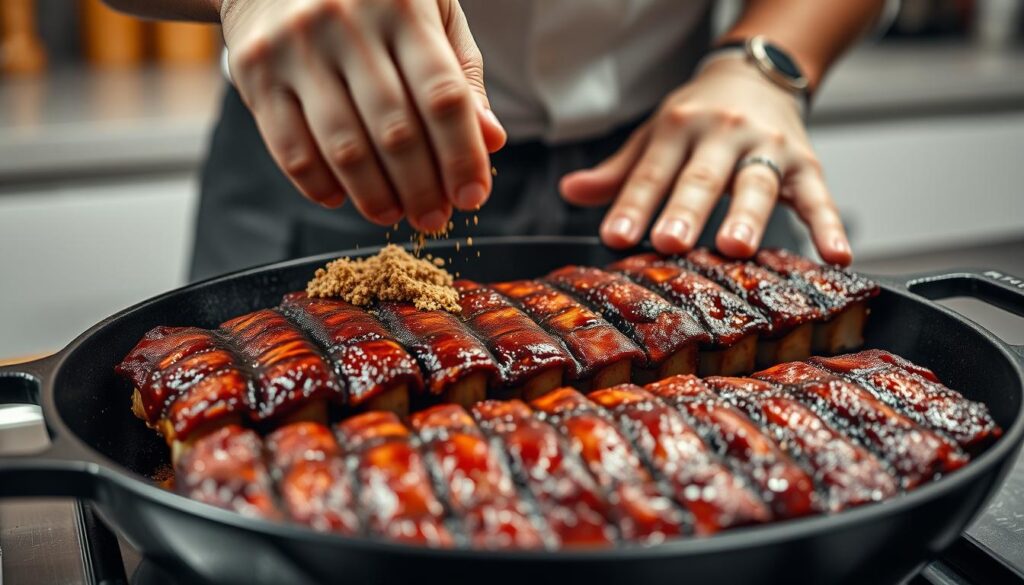
When using a Dutch oven or heavy pot, the browning process enhances the overall flavor profile. Monitor the cooking progress by the minute to ensure optimal tenderness. Adjust cooking times based on your chosen method—slower for more tender results, faster for a hearty texture.
Experiment with different techniques to find what works best for you. Proper technique is key to unlocking the full flavor and texture of your beef ribs, ensuring a delicious meal every time.
Sauce and Seasoning: Enhancing the Flavor
The secret to making your beef ribs extraordinary lies in the sauce and seasoning. A well-crafted sauce can transform a simple dish into something truly memorable. Whether you prefer a tangy BBQ flavor or a sweet teriyaki glaze, the right seasoning and sauce can elevate your recipe to new heights.
Homemade BBQ Rub and Teriyaki Variations
A homemade BBQ rub is a game-changer for flavor. Mix together paprika, brown sugar, garlic powder, and a pinch of cayenne pepper for a robust blend. For a sweeter profile, try a teriyaki-inspired rub with soy sauce, honey, and ginger. These combinations create a delicious crust on the meat that enhances the overall taste experience.
Using Beers, Stocks, and Alternative Liquids
When it comes to braising liquids, the options are endless. Stout beer adds a rich, malty flavor, while beef stock keeps the meat moist and tender. For a unique twist, try mixing in a cup of red wine or pineapple juice with your BBQ sauce. These ingredients not only add depth but also create a versatile sauce that complements the ribs perfectly.
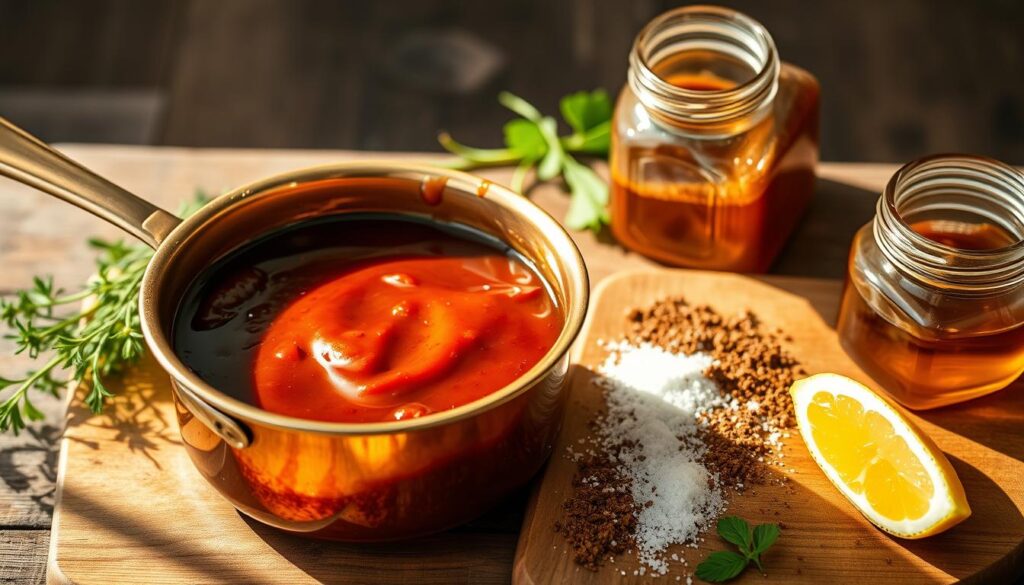
Experimenting with different spice blends and liquids allows you to customize your recipe to your taste. Remember, the key to a great dish is in the details—whether it’s the marinade, the braising liquid, or the final glaze. With a little creativity, your beef ribs will be nothing short of extraordinary.
Tips, Troubleshooting, and Storage Advice
To ensure your dish turns out perfectly, it’s important to master a few key techniques and understand how to handle common issues. This section will guide you through determining doneness, troubleshooting, and proper storage methods.
How to Know When Your Ribs Are Done
Checking for doneness is crucial to avoid undercooked or overcooked meat. Look for these clear indicators:
- The meat should be tender and easily fall apart when pulled with a fork.
- Use a meat thermometer to check the internal temperature, which should reach about 205°F for optimal tenderness.
Remember, patience is key. If the ribs feel too firm, they may need more cooking time.
Leftover Storage and Reheating Guidelines
Proper storage ensures your delicious meal remains fresh and safe to eat. Here’s how to handle leftovers:
| Storage Method | Conditions | Duration |
|---|---|---|
| Refrigeration | Cool to room temperature, place in an airtight container | Up to 3 days |
| Freezing | Sealed in an airtight container or freezer bag | Up to 3 months |
| Reheating | Microwave: 30-45 seconds per portion; Skillet: Low heat with added moisture | Until heated through |
When reheating, use low heat to preserve flavor and moisture. Adding a splash of sauce or broth can enhance the dish.
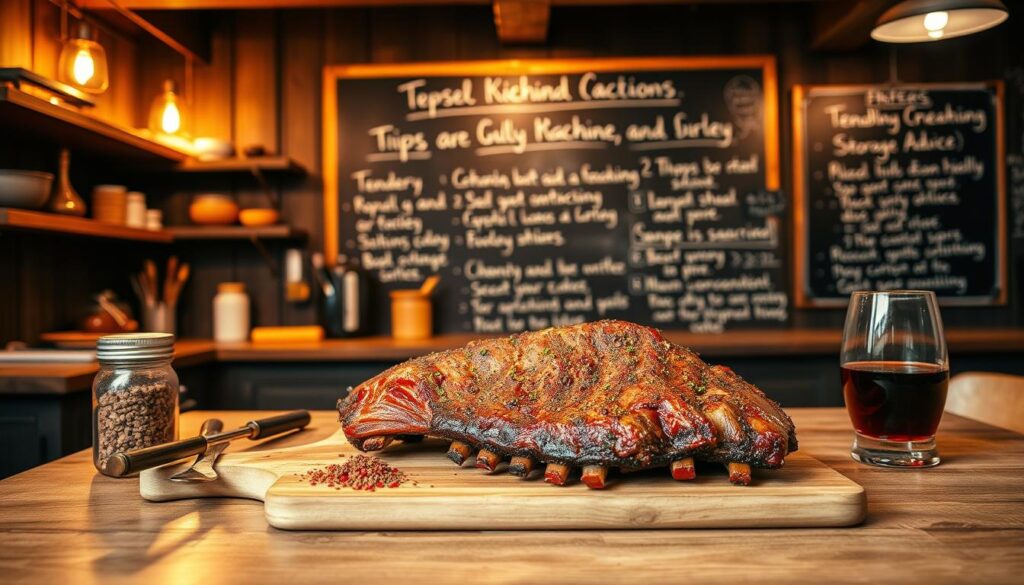
By following these tips, you’ll enjoy your perfectly cooked meal even after storage. Remember, proper storage and reheating are essential for maintaining quality and safety.
Wrapping Up Your Culinary Journey
With these simple steps, you’ve transformed tough meat into a tender, flavorful dish that’s sure to impress. Remember, the key to success lies in proper seasoning, braising techniques, and careful cooking methods.
Don’t be afraid to experiment with the recipe—try different seasonings or liquids to make it your own. Understanding the essentials of ingredient selection, cooking techniques, and storage will elevate your culinary skills and ensure delicious results every time.
Share your cooking journey with friends and family, and don’t hesitate to reach out with feedback or your own recipe twists. Thank you for joining this culinary adventure, and happy cooking!
